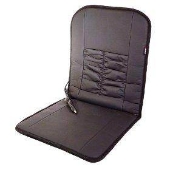
 5
5




My books, movies, videos, podcasts, events ... the big collection of paul wheaton stuff!
 3
3




Brenda
Bloom where you are planted.
http://restfultrailsfoodforestgarden.blogspot.com/
 2
2




 5
5










woodman wrote:
Quote:Windows
Caulk the edges of windows and install weather stripping.
Close blinds and curtains at night.
Tack clear plastic sheeting over the windows on the outside of the house with a staple gun.
----------------------------------------------------------------
This is the only info given to the worst heat loss area of ALL homes.
We should focus on trying to match our wall and ceiling insulation to cover the windows.
What about covering the lower3/4 and use the upper part for light?
My books, movies, videos, podcasts, events ... the big collection of paul wheaton stuff!
 1
1




Brenda
Bloom where you are planted.
http://restfultrailsfoodforestgarden.blogspot.com/




My books, movies, videos, podcasts, events ... the big collection of paul wheaton stuff!
 1
1




"the qualities of these bacteria, like the heat of the sun, electricity, or the qualities of metals, are part of the storehouse of knowledge of all men. They are manifestations of the laws of nature, free to all men and reserved exclusively to none." SCOTUS, Funk Bros. Seed Co. v. Kale Inoculant Co.
 1
1






Permaculture is a gestalt ... a study of the whole. Not just how to produce more and better food, but how human life on the planet affects and is affected by the surrounding environment.
Bill Kearns
 1
1




Brenda
Bloom where you are planted.
http://restfultrailsfoodforestgarden.blogspot.com/
 1
1




Wild Edible & Medicinal Plant classes, & DVDs
Live in peace, walk in beauty, love one another.
 1
1




 3
3




we CAN build a better world
 1
1








paul wheaton wrote:I guess this is something I would like to ..... experience more. Something where the house is a bit leaky (so, there is good air exchange) and yet toasty warm and efficient. And this is an area that I'm still a little confused/concerned.
Not to get off the topic but a solution to poor indoor air quality could be helped by air-filtering indoor plant system.
http://www.mnn.com/health/healthy-spaces/stories/best-air-filtering-houseplants-according-to-nasa








Joel Hollingsworth wrote:It's also not too difficult to build an air-to-air heat exchanger.
I can't find it today, but there's a how-to online for a system with two fans, one blowing room air onto an accordion-pleated piece of aluminum foil on its way outside, the other one blowing outside air onto the other surface on the way into the building. If it's set up correctly, it recovers a huge amount of heat.




Just call me Uncle Rice.
17 years in a straw bale house.
 1
1












 1
1




paul wheaton wrote:I guess this is something I would like to ..... experience more. Something where the house is a bit leaky (so, there is good air exchange) and yet toasty warm and efficient. And this is an area that I'm still a little confused/concerned.
So I guess the focus would be to heat the objects in the room more, but have less focus on heating the air in the room.




 5
5




It's time to get positive about negative thinking  -Art Donnelly
-Art Donnelly
 2
2








At my age, Happy Hour is a nap.
 2
2










At my age, Happy Hour is a nap.

 4
4




- Tim's Homestead Journal - Purchase a copy of Building a Better World in Your Backyard - Purchase 6 Decks of Permaculture Cards -
- Purchase 12x Decks of Permaculture Cards - Purchase a copy of the SKIP Book - Purchase 12x copies of Building a Better World in your Backyard
 5
5




 4
4




An eficient way to heat your structures info below
https://permies.com/wiki/63928f371/Wood-Heat-DIY-Rocket-Mass









paul wheaton wrote:
Take a look at http://michaelbluejay.com/electricity/heating.html
(and when you visit a really good site, I encourage you to click on the ads - it's like voting with your clicks for quality stuff)
 1
1




Moderator, Treatment Free Beekeepers group on Facebook.
https://www.facebook.com/groups/treatmentfreebeekeepers/





 6
6




 4
4




Tina Nixon wrote:Since it’s now August and autumn is around the corner, I’d like to mention one of my fave energy conservation gizmos: a bed pig. It’s a stoneware jug with a screw-top & you fill it with hot water. Ideal for warming the bedsheets, but also perfect for setting your feet against while sitting in a chair.
 4
4




 1
1




 3
3




L Gaudette wrote:
... my hands when working at a computer.
I have some wool fingerless gloves but they start to bother me and I get too warm after a bit - I think I'd need something a little thinner and a little more fitted. I !
 3
3





|
Those cherries would go best on cherry cheesecake. Don't put those cherries on this tiny ad:
12 DVDs bundle
https://permies.com/wiki/269050/DVDs-bundle
|



